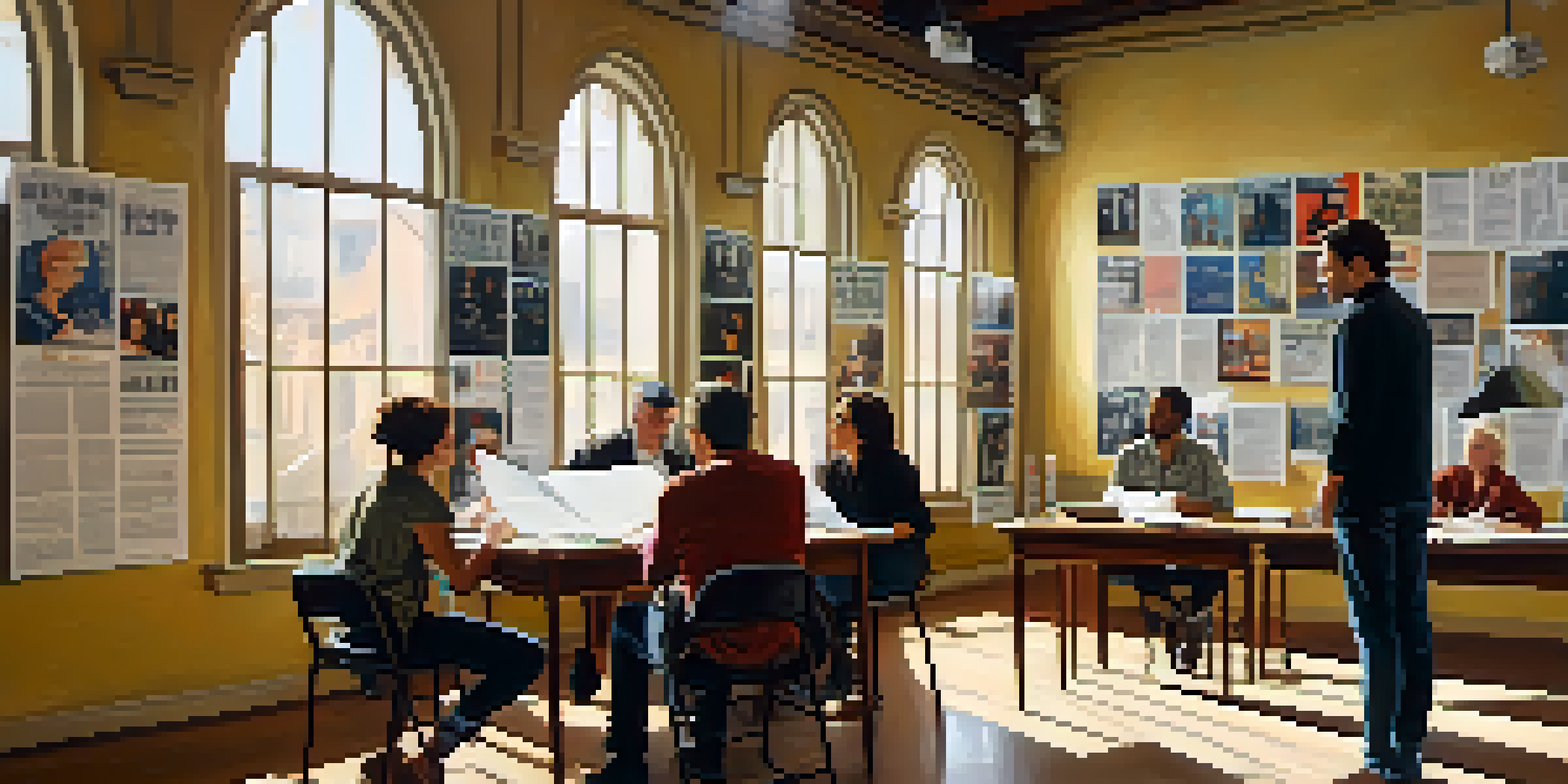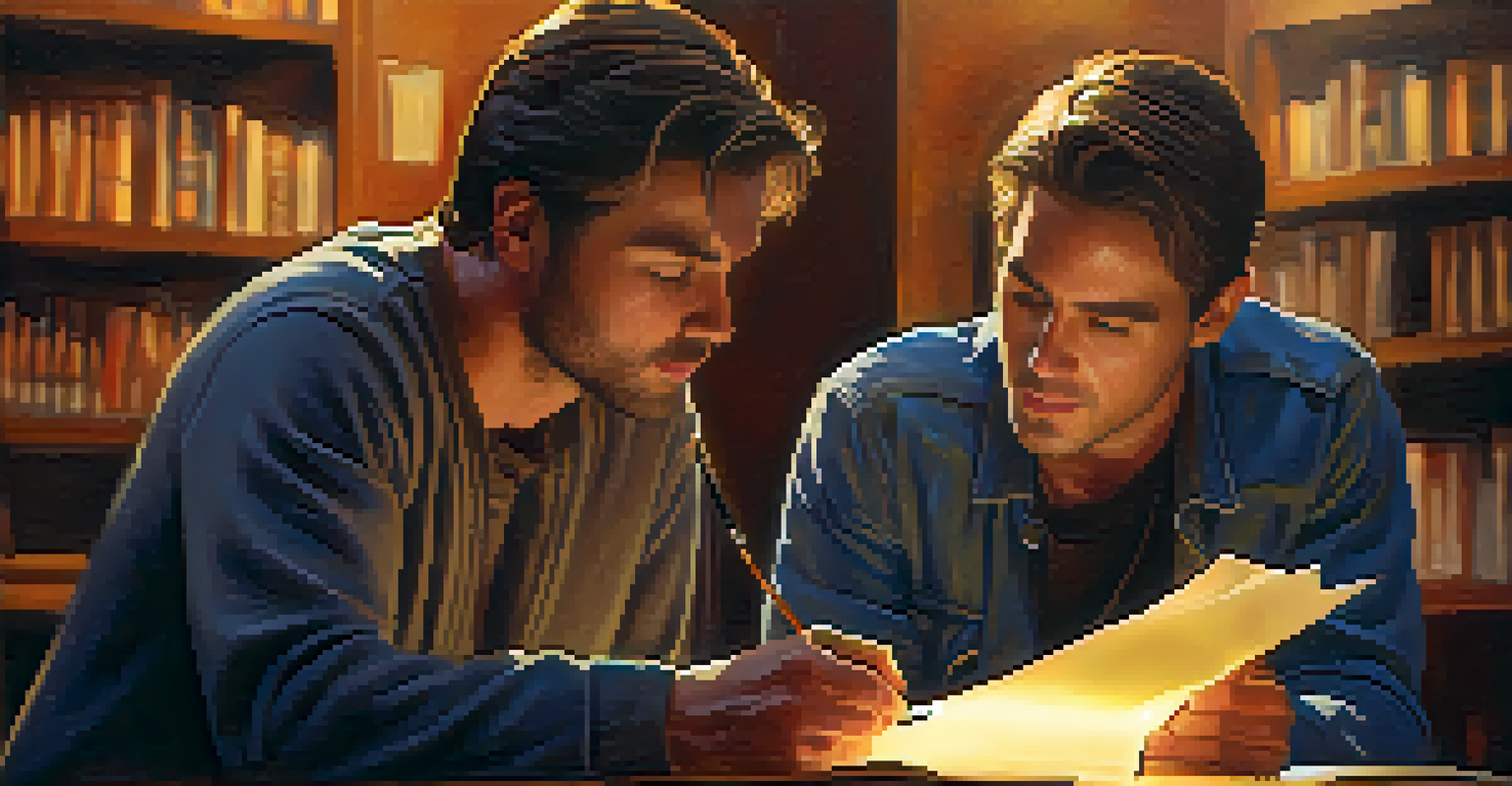Navigating the Casting Landscape: A Director's Perspective

Understanding the Casting Process: An Overview
Casting is a crucial step in filmmaking that shapes the entire project. It involves selecting actors who not only fit the character but also bring a unique essence to the role. For directors, understanding this process is essential to create a compelling narrative.
Casting is 90% of directing.
The casting landscape can be complex, often requiring a balance between artistic vision and practical considerations. Directors must navigate auditions, chemistry reads, and callbacks, all while maintaining a clear vision of the character's journey. This process can be as exciting as it is daunting.
Ultimately, successful casting can elevate a film from good to great. When the right actor embodies a character, the entire story resonates more deeply with audiences, making the casting process one of the most critical decisions a director faces.
Identifying the Right Talent: Key Qualities to Look For
When searching for the right talent, directors often look for specific qualities that align with their vision. These can include not only acting skills but also charisma, work ethic, and the ability to collaborate. A strong connection to the character can often be a game-changer.

Directors should also consider the actor's range and adaptability. An actor who can bring multiple dimensions to a role will likely enhance the storytelling. Sometimes, the most unexpected choices can lead to the most compelling performances.
Casting Shapes the Film's Success
Successful casting can elevate a film from good to great by ensuring the right actors embody the characters.
Additionally, understanding the actor’s previous work can provide invaluable insight into their capabilities. Watching past performances can help directors gauge whether an actor can deliver what the role demands, ensuring a better fit for the project.
The Role of Auditions: Making First Impressions Count
Auditions serve as a vital stepping stone in the casting process. They allow directors to see how actors interpret a character and bring the script to life. A successful audition can set the tone for the entire production.
The first step in creating a character is casting the right actor.
During auditions, directors pay close attention to not just the performance, but also how actors engage with the material. It’s about finding that spark—an emotional connection that can turn a good audition into a memorable one. This is where the magic often happens.
Moreover, auditions provide an opportunity for directors to observe an actor’s professionalism and demeanor. How they handle direction and feedback can reveal a lot about their potential fit within the cast and crew dynamics.
Chemistry Reads: Finding the Right Dynamics
Chemistry reads are a crucial part of the casting process that can’t be overlooked. They allow directors to test the interactions between actors, ensuring that they have the right dynamics for their roles. This can be particularly important for romantic or dramatic pairings.
During these sessions, directors look for a natural rapport and synergy between actors. It's fascinating how two performers can elevate each other, creating a captivating on-screen presence that resonates with viewers. A good chemistry read can often confirm a director's instincts about casting choices.
Key Qualities in Talent Selection
Directors look for specific qualities like charisma, adaptability, and a strong connection to the character when selecting actors.
Beyond just talent, chemistry can significantly impact the storytelling. When actors genuinely connect, it enhances the believability of their characters' relationships, making the film more engaging for the audience.
Navigating the Challenges of Casting: A Director's Dilemma
Casting can present unique challenges, from limited availability to budget constraints. Directors often find themselves balancing their vision with practical limitations, which can be a frustrating but necessary part of the process. The key is to remain flexible and open-minded.
Sometimes, a director may have their heart set on a particular actor, only to discover scheduling conflicts or financial hurdles. In these moments, creativity becomes essential. Finding alternative options that still align with the vision can lead to unexpected discoveries.
Moreover, the pressure to make the right choice can weigh heavily on directors. Each casting decision has implications for the entire project, and it's crucial to trust intuition while also being willing to adapt. The journey through these challenges can ultimately lead to a more rewarding outcome.
Building a Collaborative Casting Team: Essential Partnerships
Collaboration is key in the casting process, and directors often rely on a talented team to help navigate this landscape. Casting directors play a pivotal role, bringing their expertise and industry knowledge to the table. This partnership can make a significant difference in finding the right talent.
A strong casting team not only understands the vision but also knows how to source and evaluate talent effectively. Their insights can help directors make informed decisions, ensuring that every actor fits seamlessly into the project’s overall aesthetic.
Collaboration Enhances the Process
Building a collaborative casting team fosters creativity and helps directors make informed decisions about talent.
Additionally, maintaining open communication within the team fosters a creative environment. When all parties feel valued and heard, the casting process becomes more enjoyable and productive, ultimately benefiting the film as a whole.
Final Thoughts: The Impact of Thoughtful Casting
In the end, thoughtful casting can transform a film into something truly special. It’s about finding the right actors who not only fit the roles but also resonate with audiences on a deeper level. Directors play a crucial role in this journey.
When casting decisions are made with care and intention, the entire production benefits. Audiences can feel the authenticity and connection among the cast, which enhances their viewing experience. It’s a ripple effect that begins with the casting process.

As directors reflect on their experiences, they often recognize that casting is an art in itself. The journey may be challenging, but the rewards of finding the perfect cast make every moment worthwhile.